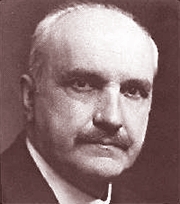On this date in 1863, philosopher George Santayana (né Jorge Agustín Nicolás Ruiz de Santayana y Borrás) was born in Madrid, Spain, where he was schooled in Catholicism before emigrating with his parents to the U.S. at age 9 in 1872. Santayana earned a Ph.D. in philosophy at Harvard University in 1886 and joined the faculty in 1889. His first book was Sonnets and Other Verses (1894), followed by his eloquent philosophical works The Sense of Beauty (1896), The Life of Reason (1905-06), Skepticism and Animal Faith (1923) and the four-volume The Realms of Being (1927-40). He wrote one novel, The Last Puritan (1935), which proved popular. His final work was Domination and Power (1951).
“We should have to abandon our vested illusions, our irrational religions and patriotisms,” he wrote in The Life of Reason: Reason in Art (1906). “The fact of having been born is a bad augury for immortality,” Santayana quipped in The Life of Reason. “My atheism, like that of Spinoza, is true piety toward the universe and denies only gods fashioned by men in their own image, to be servants of their human interests.” (On My Friendly Critics, Soliloquies in England, 1922.)
He resigned from Harvard in 1912 at age 48 to travel abroad and never returned to the U.S. Santayana never married. Scholars have speculated about his sexuality but it remains unclear whether he had any actual heterosexual or homosexual relationships.
Although he was an avowed atheist, his views on religion have been described as fairly benign and were outlined in his books Reason in Religion, The Idea of Christ in the Gospels and Interpretations of Poetry and Religion. For much of the last decade of his life, he was cared for by Irish nuns at a convent in Rome, where he died in 1952 at age 88.

